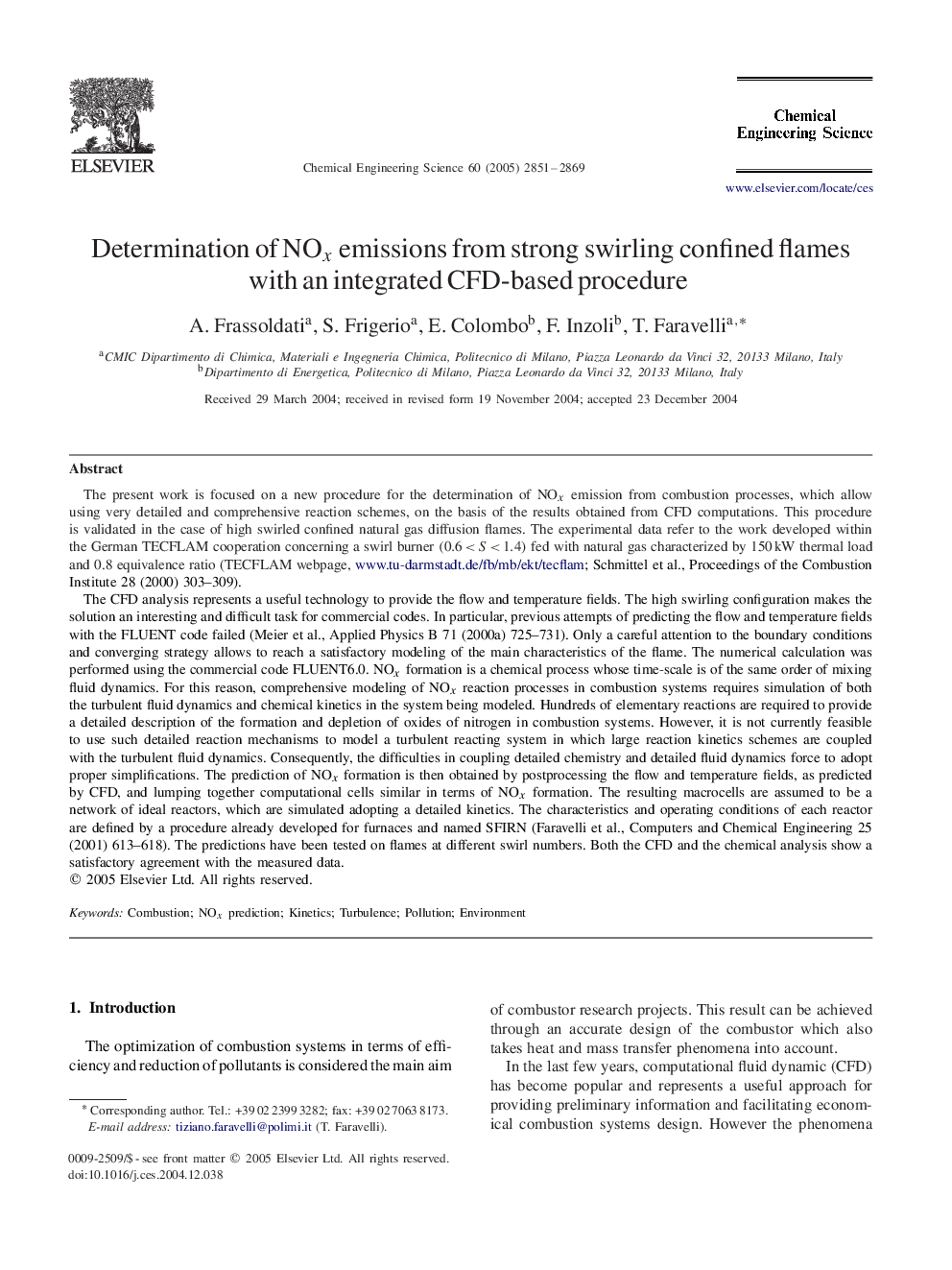| Article ID | Journal | Published Year | Pages | File Type |
|---|---|---|---|---|
| 10263413 | Chemical Engineering Science | 2005 | 19 Pages |
Abstract
The CFD analysis represents a useful technology to provide the flow and temperature fields. The high swirling configuration makes the solution an interesting and difficult task for commercial codes. In particular, previous attempts of predicting the flow and temperature fields with the FLUENT code failed (Meier et al., Applied Physics B 71 (2000a) 725-731). Only a careful attention to the boundary conditions and converging strategy allows to reach a satisfactory modeling of the main characteristics of the flame. The numerical calculation was performed using the commercial code FLUENT6.0. NOx formation is a chemical process whose time-scale is of the same order of mixing fluid dynamics. For this reason, comprehensive modeling of NOx reaction processes in combustion systems requires simulation of both the turbulent fluid dynamics and chemical kinetics in the system being modeled. Hundreds of elementary reactions are required to provide a detailed description of the formation and depletion of oxides of nitrogen in combustion systems. However, it is not currently feasible to use such detailed reaction mechanisms to model a turbulent reacting system in which large reaction kinetics schemes are coupled with the turbulent fluid dynamics. Consequently, the difficulties in coupling detailed chemistry and detailed fluid dynamics force to adopt proper simplifications. The prediction of NOx formation is then obtained by postprocessing the flow and temperature fields, as predicted by CFD, and lumping together computational cells similar in terms of NOx formation. The resulting macrocells are assumed to be a network of ideal reactors, which are simulated adopting a detailed kinetics. The characteristics and operating conditions of each reactor are defined by a procedure already developed for furnaces and named SFIRN (Faravelli et al., Computers and Chemical Engineering 25 (2001) 613-618). The predictions have been tested on flames at different swirl numbers. Both the CFD and the chemical analysis show a satisfactory agreement with the measured data.
Related Topics
Physical Sciences and Engineering
Chemical Engineering
Chemical Engineering (General)
Authors
A. Frassoldati, S. Frigerio, E. Colombo, F. Inzoli, T. Faravelli,
